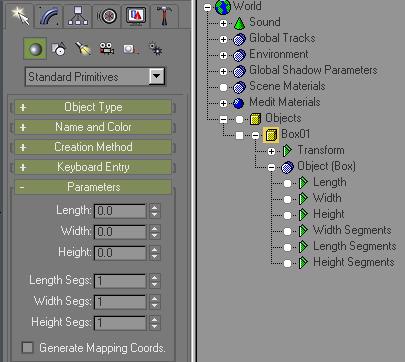
Once you have defined an object, gmax evaluates changes affecting the base object and displays the result in the scene. What these changes are, and the order in which they are evaluated, is called the object data flow.
Master object refers to an object defined by a set of creation parameters and the original position and orientation of its pivot point. You never see the master object. What you see on the screen is always the result of at least the following data flow:
Master Object
-> Object Transforms
-> Object Properties

Object creation parameters in the Create panel and Track View
The Object Modifiers are the next group evaluated in the data flow. Each modifier is evaluated in the order it was placed on the modifier stack. The modifications all occur in the objectÆs object space and the result is called the modified object.
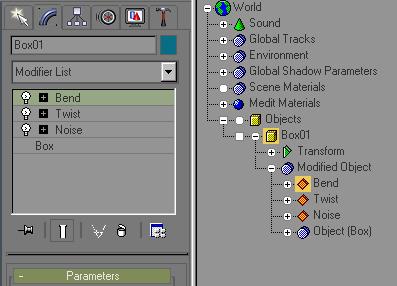
Object modifiers in the Modify panel and Track View
Once the modified object has been evaluated, it is transformed within the world coordinate system. Transforms cover the position, rotation, and scale changes applied from the transform buttons on the Main toolbar.
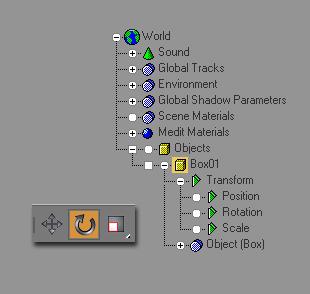
Object transforms on the Main toolbar and Track View
The method of evaluating all modifiers first and then evaluating the combined transforms has important ramifications for the way you work with gmax.
Transforms are completely independent from the order of application. For example, imagine a cylinder that is 40 units high. If you scale the cylinder along its Z axis, increase its height, and then bend the cylinder 180 degrees, you get the same result as if you bent the cylinder first and then scaled it. The scale transform is always evaluated after the bend modifier.
If you want to apply a transform that is evaluated in a specific order in the modifier stack, use the XForm modifier. See XForm Modifier.
Object properties are the last to be evaluated before the object is displayed. These are properties unique to each named object such as its name, wireframe color, and display properties. This is the end of the data flow and the result is the named object you see in your scene. See Properties.
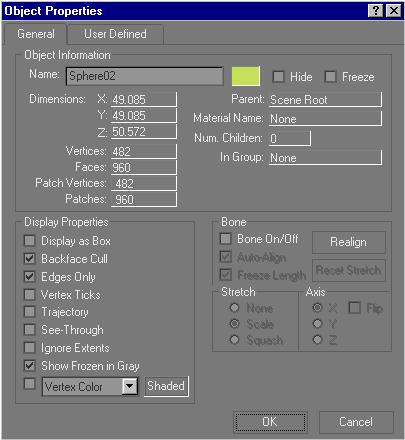
Right-click an object and choose Properties to display its Object Properties dialog.
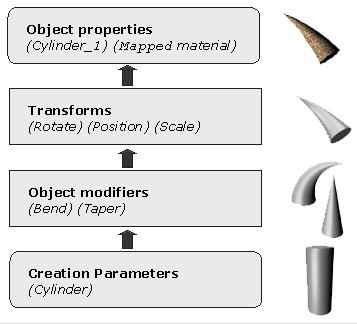
Data flow diagram of a typical gmax object